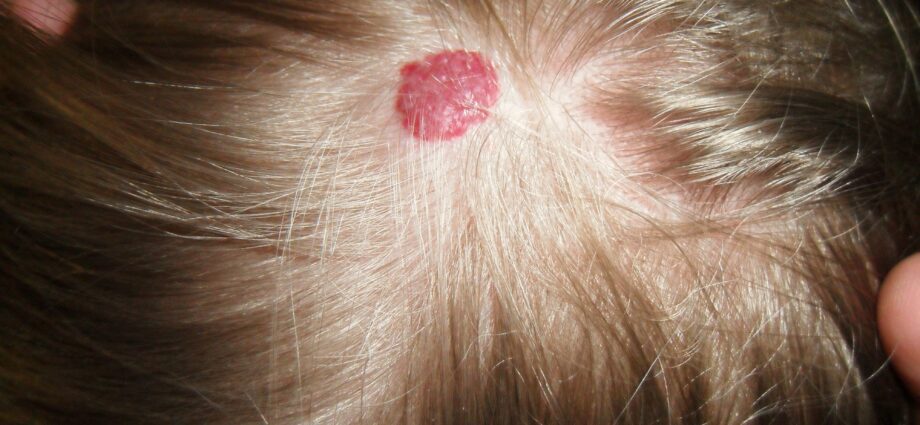Contents
Hemangiomas
What is it ?
A hemangioma, or infantile hemangioma, is a benign vascular tumor that appears on an infant’s body a few days or weeks after birth and grows rapidly during the first months of life, before regressing spontaneously and disappearing with age. 5-7 years old. However, sometimes complications require medical treatment. It is the most common vascular abnormality, affecting 5-10% of children. (1)
Symptoms
A hemangioma can measure from a few millimeters to several centimeters. It is isolated in 80% of cases and is localized to the head and neck in 60% of cases (1). But there are also multiple (or disseminated) hemangiomas. After a phase of rapid growth, its development is interrupted around the first year of the infant’s life, then the tumor gradually regresses until it disappears completely in the majority of cases. There are three clinical types of hemangioma:
- Cutaneous hemangiomas, affecting the dermis, of a bright red color, taking the form of a plaque or a lobe, with a smooth or grainy surface like a fruit, hence its name of “strawberry angioma”, appearing during the first three weeks of life;
- Subcutaneous hemangiomas, concerning the hypodermis, bluish in color and appearing later, around 3 or 4 months.
- Mixed forms affecting the dermis and hypodermis, red in the center and bluish around.
The origins of the disease
the organization of the vascular system has not matured in the weeks before birth, as is normally the case, and continues abnormally into extrauterine life.
It is important to stress that, despite the efforts of classification, there is still a great semantic and therefore diagnostic confusion around the term “hemangioma”. Note that there are other benign vascular tumors, such as congenital hemangioma. Unlike the tumor acquired from hemangioma, the tumor it causes is present from birth and does not grow. It is purple and often localized in the limbs near the joints. Finally, a distinction should be made between vascular tumors and vascular malformations.
Risk factors
Girls are three times more likely to develop a hemangioma than boys. It is also observed that the risk is higher in infants with fair and white skin, low weight and when the pregnancy has suffered complications.
Prevention and treatment
Regression of hemangioma is spontaneous in 80-90% of cases (depending on the source), but it is necessary to apply treatment when the hemangioma is large and becomes complicated, in the following cases:
- The tumor necroses, bleeds and ulcers;
- The location of the tumor risks preventing the proper functioning of an organ, whether it is the eye, the mouth, the ear, the nose…;
- A very unsightly hemangioma has significant psychic effects for the child, but also for the parents. Indeed, an unsightly hemangioma can lead to a whole range of negative feelings: a feeling of isolation from the child, guilt, anxiety and even fear.
Hemangioma treatments use corticosteroids, cryotherapy (cold treatment), laser and, more rarely, surgical excision. Note that a new treatment discovered by chance in 2008, propranolol, gives good results, while limiting the risk of side effects. It is a beta-blocker drug that received marketing authorization in Europe in 2014.










